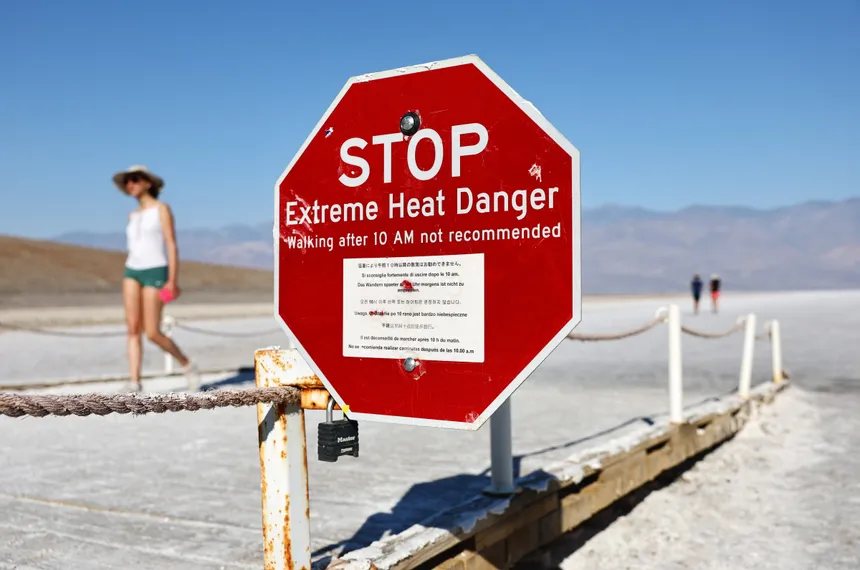Scientists have warned that the return of the El Niño climate phenomenon later this year will cause global temperatures to rise dramatically, delivering unprecedented heatwaves. Early forecasts suggest that El Niño will return later in 2023, exacerbating extreme weather around the globe and making it “very likely” that the world will exceed 1.5C of warming. The hottest year in recorded history, 2016, was driven by a major El Niño.
The El Niño phenomenon is a natural oscillation driven by ocean temperatures and winds in the Pacific, which switches between El Niño, its cooler counterpart La Niña, and neutral conditions. The last three years have seen an unusual run of consecutive La Niña events, making this year’s forecast of a hotter-than-usual year valid. However, El Niño occurs during the northern hemisphere winter, and its heating effect takes months to be felt, making 2024 a much more likely year to set a new global temperature record.
The return of El Niño will supercharge extreme weather, with scientists warning of unprecedented heatwaves. “It’s very likely that the next big El Niño could take us over 1.5C,” said Prof Adam Scaife, the head of long-range prediction at the UK Met Office. “The probability of having the first year at 1.5C in the next five-year period is now about 50:50.”
The fluctuating impacts of the El Niño-La Niña cycle could be seen in many regions of the world, Scaife said. “Science can now tell us when these things are coming months ahead. So we really do need to use it and be more prepared, from having readiness of emergency services right down to what crops to plant.”
Prof James Hansen, at Columbia University, and colleagues said recently: “We suggest that 2024 is likely to be off the chart as the warmest year on record. It is unlikely that the current La Niña will continue a fourth year. Even a little futz of an El Niño should be sufficient for record global temperature.”

The return of El Niño will not only bring heatwaves but also exacerbate droughts, wildfires, and flooding in various parts of the world. “When El Niño arrives, the extreme weather that has rampaged across our planet in 2021 and 2022 will pale into insignificance,” said Prof Bill McGuire, at University College London.
However, the degree of exacerbation was under debate among scientists. “The thermodynamic effects of climate change are going to make the anomalies we get from an El Niño year just that more extreme,” said Prof Tim Palmer, at the University of Oxford.
Climate modelling results issued in early January by Australia’s Bureau of Meteorology indicated the country could swing from three years of above-average rainfall to one of the hottest, driest El Niño periods on record, increasing the risk of severe heatwaves, droughts, and fires. In December, the US National Oceanic and Atmospheric Administration rated the odds of an El Niño forming by August-October as 66%.
The scale of the likely El Niño was as yet unclear. “Many seasonal forecast models are suggesting the arrival of moderate El Niño conditions from summer 2023,” said Prof Andy Turner, at the University of Reading.
The El Niño-La Niña phenomenon is the biggest cause of year-to-year differences in weather in many regions. In La Niña years, the east-to-west Pacific trade winds are stronger, pushing warm surface waters to the west and drawing up deeper, cooler water in the east. El Niño events happen when the trade winds wane, allowing the warm waters to spread back eastwards, smothering the cooler waters and leading to a rise in global temperatures.
Nations bordering the west Pacific, including Indonesia and Australia, experience hotter and drier conditions. “You tend to get lots of droughts, lots of wildfires,” said Scaife, though China can suffer flooding in the Yangtze basin after big El Niños. India’s monsoons, and rains in southern Africa can also be suppressed. Other regions, such as east Africa and the southern US, both of which have suffered recent droughts, can get more rain and flooding.
In South America, southern regions are wetter, but the Amazon, already approaching a dangerous tipping point, is drier. “The effects of El Niño could also be felt as far as the northern hemisphere mid-latitudes, with a likelihood of wetter conditions in Spain from summer onwards and drier conditions on the eastern seaboard of the US in the following winter and spring,” said Turner.
The biggest unanswered question is whether climate change favors more El Niño or more La Niña events. “That is crucially important for countries looking at long-term adaptation, and will need much higher-resolution climate models. That can only come about with bigger computers,” said Palmer.
Palmer and colleagues have called for the establishment of a $1bn international centre for climate modelling, akin to the Large Hadron Collider that allows international particle physicists to do together what no single nation can do alone.

